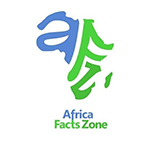The 10 Largest Economies in the World
An In-Depth Overview

The global economy is constantly shifting, with countries vying for top spots based on their economic output and growth potential.
Understanding the largest economies can provide insights into global markets, investment opportunities, and emerging trends. This guide delves into the world’s top economies by GDP, highlighting their strengths, industries, and influence.
Table of Contents
- Overview of the World’s Largest Economies
- Understanding GDP and Its Impact on Economic Ranking
- #1: United States – The World’s Leading Economy
- #2: China – Rapid Growth and Industrial Powerhouse
- #3: Japan – Technological Innovation and Stability
- #4: Germany – Europe’s Economic Giant
- #5: India – The Fastest-Growing Large Economy
- #6: United Kingdom – Financial Hub of the World
- #7: France – A Diverse and Resilient Economy
- #8: Italy – Industrial and Cultural Leader
- #9: Canada – Resource-Rich and Highly Developed
- #10: South Korea – A Technologically Advanced Economy
- Global Economic Trends and the Future of the Top 10
- Conclusion: The Influence of Top Economies on Global Growth
Overview of the World’s Largest Economies
Economic size is typically measured by Gross Domestic Product (GDP), a metric that reflects the total market value of goods and services produced within a country. Countries with the largest GDPs play significant roles in global markets, innovation, and trade.
Understanding GDP and Its Impact on Economic Ranking
Gross Domestic Product (GDP) is the most widely used measure of economic health. It indicates a country’s production and consumption capacity, investment in infrastructure, and level of exports and imports.
Countries with a high GDP are often global leaders in finance, technology, and manufacturing.
#1: United States – The World’s Largest Economy
Economic Drivers
With its vast consumer base, diverse industries, and innovative spirit, the U.S. economy has held the top GDP ranking for decades. Key drivers include consumer spending, technological innovation, and a strong finance sector.
Key Sectors
The United States is known for its dominance in technology (Silicon Valley), healthcare, manufacturing, and finance.
Global giants like Apple, Microsoft, and Google spearhead advancements, while cities like New York and San Francisco are global financial centres.
Future Outlook
Despite inflation and trade tensions, the U.S. remains well-positioned for continued growth through technological advancements, renewable energy investments, and a resilient workforce.
#2: China – An Economic Giant with Rapid Growth
Manufacturing and Export Dominance
China’s rise to economic prominence is rooted in its manufacturing and export industries. Known as “the world’s factory,” China produces a vast range of goods, from electronics to textiles, for global markets.
Key Areas of Expansion
China is investing heavily in infrastructure and technology, notably in AI and telecommunications (e.g., Huawei). Additionally, China’s Belt and Road Initiative (BRI) has expanded its trade influence across Asia, Africa, and Europe, establishing itself as a major global economic force.
#3: Japan – The Technology and Innovation Leader
Leading Industries
Japan is celebrated for its advanced technology and automotive industries, with companies like Toyota, Sony, and Panasonic driving global innovations. Its expertise in robotics and electronics has positioned it as a high-tech leader.
Challenges and Opportunities
An ageing population and a shrinking workforce pose challenges to Japan’s growth, but the country’s dedication to automation and robotics may offset workforce limitations, ensuring continued influence in global tech and automotive industries.
Also Read: The Most Beautiful Country In The World
#4: Germany – Europe’s Industrial Powerhouse
Economic Structure
Germany has a highly developed, export-oriented economy with strengths in manufacturing, engineering, and automotive. Renowned brands like BMW, Volkswagen, and Siemens are staples of the German industry, known for quality and innovation.
Impact on European Markets
As the largest economy in Europe, Germany plays a crucial role in the European Union’s economic health. Its trade relations within Europe, particularly with France, Italy, and Eastern Europe, reinforce Germany’s role as an economic stabilizer in the region.
#5: India – The Fastest-Growing Large Economy
Booming Sectors
India’s economy is fueled by its IT sector, pharmaceuticals, and growing middle class. Major cities like Bengaluru and Mumbai are hubs of technological and industrial growth, attracting investments from around the world.
Growth Potential and Challenges
With one of the youngest populations globally, India has high growth potential. However, issues such as infrastructure gaps and regulatory challenges must be addressed to sustain long-term economic growth.
#6: United Kingdom – Financial and Cultural Hub
Financial Services and Innovation
London is one of the world’s leading financial centres, with a strong presence in banking, insurance, and fintech. The UK’s creative industries, including media, fashion, and design, also contribute significantly to its GDP.
Post-Brexit Economy
While Brexit has brought challenges, the UK continues to adapt, strengthening its global trade relationships and focusing on innovation and digital industries to maintain economic resilience.
#7: France – A Diverse and Resilient Economy
Luxury Goods and Agriculture
France is a global leader in luxury goods, agriculture, and aerospace. Brands like Louis Vuitton and L’Oréal, along with agricultural exports like wine and cheese, boost France’s international standing.
Future Growth Areas
France is investing in renewable energy and technology, aiming to become a leader in green innovation. This focus could help offset economic challenges and drive sustainable growth.
#8: Italy – Tradition Meets Industrial Innovation
Industrial and Cultural Exports
Italy’s economy is known for luxury goods, automotive (Fiat), and its vast tourism industry. Italian fashion, food, and art contribute significantly to both domestic GDP and international exports.
Economic Challenges
While Italy has a strong cultural identity, high public debt and an ageing population challenge its economic growth. However, Italy’s small and medium enterprises (SMEs) remain resilient.
#9: Canada – Resource-Rich with a Stable Economy
Natural Resources and Trade
Canada’s economy relies heavily on natural resources, including oil, natural gas, and minerals. With extensive trade agreements, particularly with the U.S., Canada’s stable economy supports its high GDP.
Strengths and Trade Relationships
Strong ties with the United States and growing partnerships in Asia make Canada a significant player in resource-based and high-tech industries.
#10: South Korea – Technology and Heavy Industry Hub
Technology Sector Leadership
South Korea’s economy is defined by its tech giants, particularly Samsung and LG. With a strong focus on research and development, South Korea leads in electronics, semiconductor manufacturing, and heavy industries.
Export-Driven Economy
South Korea’s economy is heavily export-driven, with a focus on technology, automotive, and shipbuilding industries. This export orientation has enabled steady growth and a substantial presence in global markets.
Global Trends Impacting Economic Rankings
Technological advancement, climate policies, and shifting trade agreements are reshaping global economies. Emerging markets, digital currencies, and sustainable development efforts will play a pivotal role in determining future economic rankings.
Conclusion: The Influence of the World’s Top Economies
The largest economies drive trends, shape international policies, and influence global markets.
By understanding these economies’ strengths and challenges, we gain insight into potential investment opportunities, technological advancements, and future economic trends.
References:





